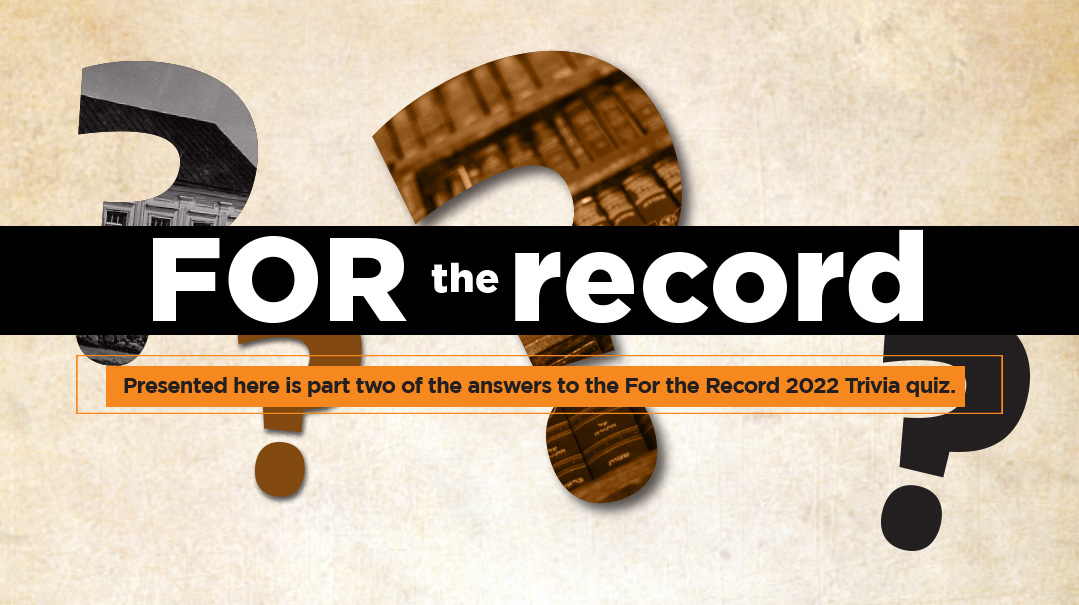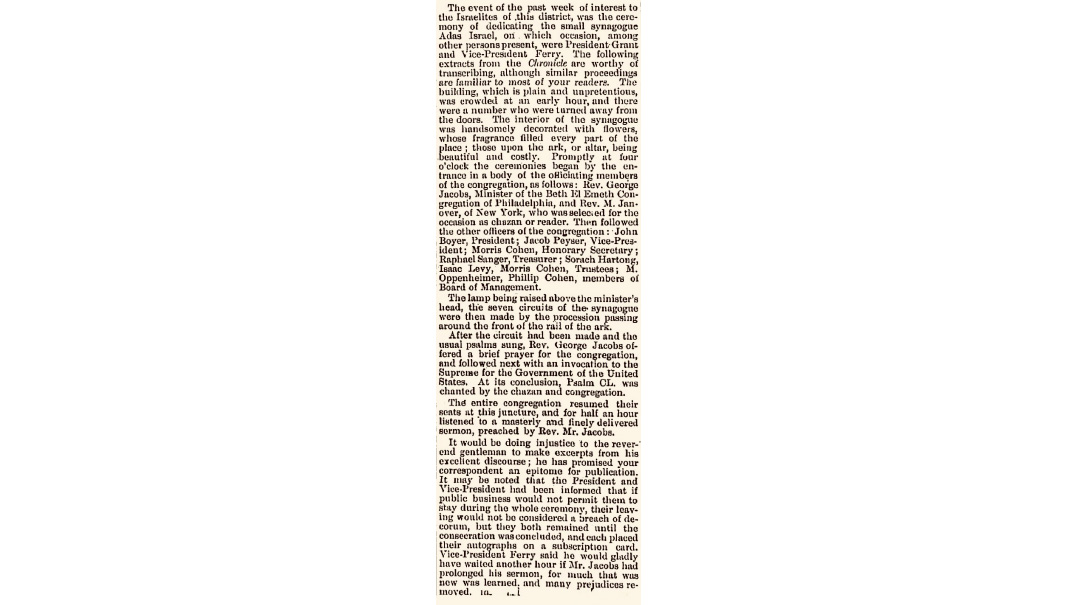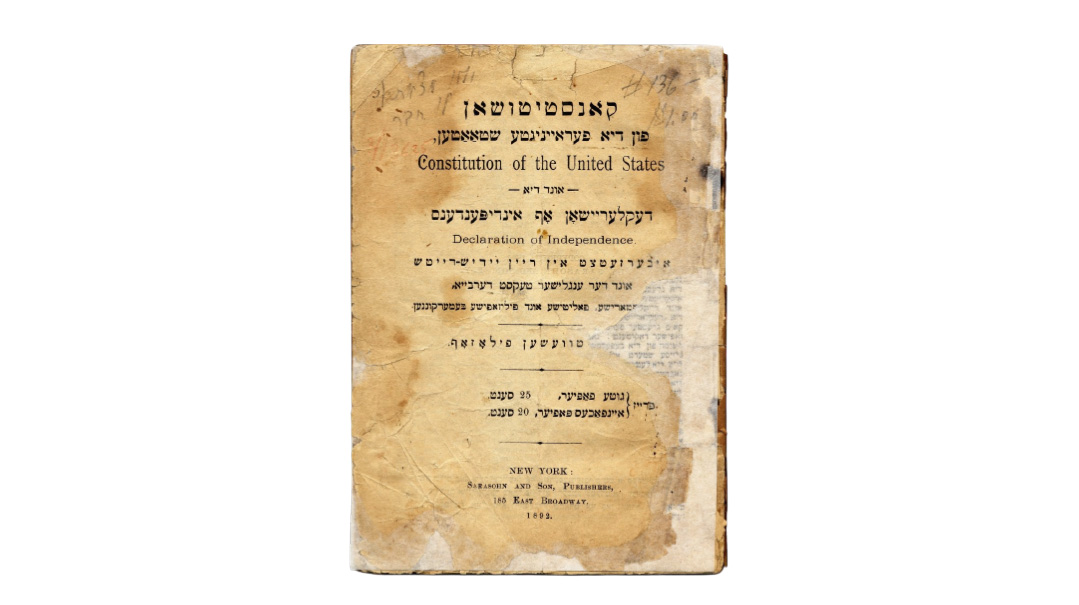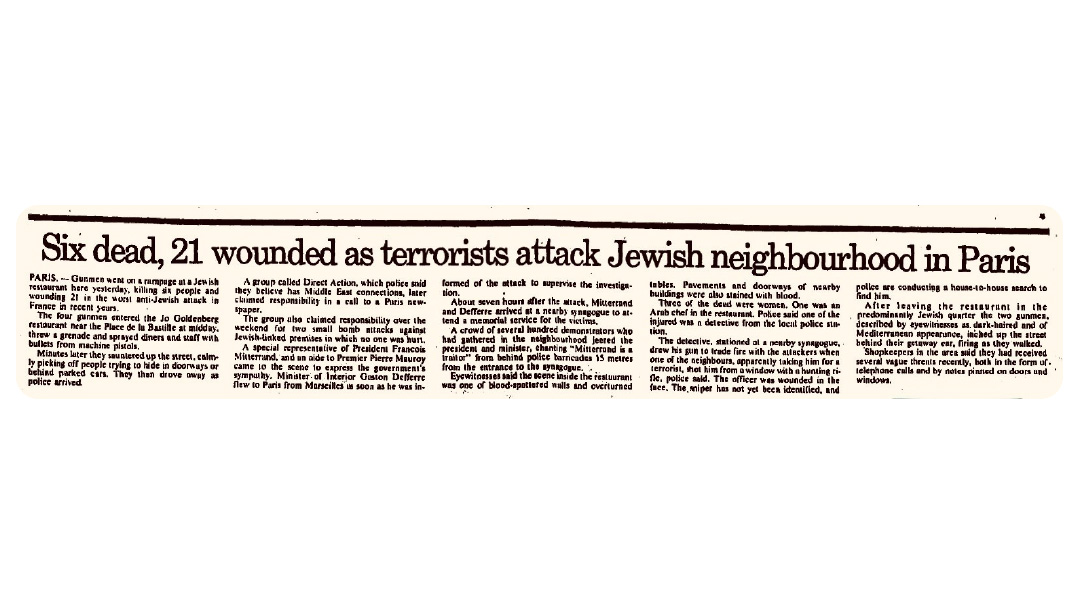Part Two of the Answers to the 2022 Trivia Quiz
| April 5, 2022Here are the answers to Part Two. How'd you do on Part One?

To see the part one answers Click Here
What major event occurred in the 1960s that served as a catalyst for the growth of the American yeshivah world?
The Vietnam War. Until then, the visionary efforts of Rav Shraga Feivel Mendlowitz, Rav Aharon Kotler, and others had led to a burgeoning yeshivah movement, but most students terminated their studies with high school graduation. Following the Gulf of Tonkin Resolution in 1964, President Johnson increased the US military presence in Vietnam via the Selective Service Act. The draft lottery in 1969 expanded it further. Divinity school students were eligible for deferment, and many continued yeshivah studies to avoid the draft. This led to a sudden rise in post–high school yeshivah attendance.
- What did all synagogues in the US until 1795 have in common?
They were all Sephardic. Descendants of Spanish exiles dominated Jewish communal life in America for centuries. Shearith Israel — the Spanish-Portuguese Synagogue in New Amsterdam (now Manhattan) — was founded in 1654. The Touro Synagogue in Newport, Rhode Island, began in 1658. Congregations Mikveh Israel of Philadelphia and Savannah were both Sephardic, as was Beth Elohim of Charleston. The first Ashkenazi shul was Philadelphia’s Congregation Rodeph Shalom in 1795, and when B’nai Jeshurun opened in New York in 1825, it was only the third Ashkenazi congregation in the country.
- When did the first sefer Torah arrive in America, and to which city?
In 1655 the leaders of Amsterdam’s Portuguese Synagogue (known as the Esnoga) loaned a sefer Torah to the aforementioned Shearith Israel of New Amsterdam. This was the first sefer Torah in North America. As prospects for the future of Judaism in America began to dim, the Torah was returned to the Netherlands and given to the community of Amersfoort in 1663. Little did they know….
- How many Jewish day schools were there in 1936 in America outside of New York, and where were they?
The only full-time Jewish day school outside of New York in 1936 was Talmudical Academy of Baltimore (later Chofetz Chaim), founded in 1917 as Baltimore Parochial Hebrew School by Rav Avraham Nachman Schwartz.
- Name three personalities who were offered the position of rosh yeshivah in Chachmei Lublin following the passing of Rav Meir Shapiro in 1933.
When Rav Meir Shapiro passed away suddenly at the age of 46, a replacement was sought to fill the void at Yeshivas Chachmei Lublin. Among the long list of those whose candidacy was considered includes Rav Yosef Rosen (the Rogatchover Gaon); Rav Shlomo Eiger (the Lubliner Rav); Rav Michoel Forshlager; Rav Avraham Shmuel Hirshovitz, rosh yeshivah of Slonim Baranovich; Rav Dovid Moshe Rabinowitz (son-in-law of the Radomsker Rebbe); Rav Yosef Zusmanowitz (the Yerushalmi); and Rav Menachem Ziemba. Several Lithuanian Torah giants were considered as well. (We will expand upon this in a future piece.)
- Name four RIETS roshei yeshivah who served in prominent rabbinical positions in Europe and the cities they served in.
In the first half of the 20th century, Rabbi Dr. Bernard Revel recruited roshei yeshivah from the ranks of European Torah scholars. Several had served as prominent communal rabbis prior to their immigrating to the United States. Rav Moshe Soloveitchik was rabbi in Choslovitz, Rav Moshe Shatzkes was the last rabbi of Lomza, Rav Dovid Lifshitz was known as the Suvalker Rav, and Rav Yitzchak Rubinstein was considered the rabbi of Vilna in a very contested position.
In addition to the above, Rav Shlomo Nosson Kotler was rabbi of Birzh, Uzhvent, and Kurshon before serving as the first rosh yeshivah of RIETS, returning to the Kurshon rabbinate afterward. Rav Shimon Shkop was the rav in Malech and Bransk (and later in a small Grodno neighborhood) before his short stint there, and Rav Chaim Heller had a short stint as rabbi of Lomza, while in his later years he delivered shiurim in RIETS.
- This chassidic dynasty chose its postwar leader using democratic elections.
The last rebbe of Slonim, Rav Shlomo Dovid Yehoshua Weinberg, was killed by the Nazis in 1943. In order to preserve the future of Slonim, democratic elections were held in 1954 to elect a new rebbe. Candidates included two members of the Luria family; Rav Avraham Weinberg, a descendant of the Yesod Ha’avodah of Slonim; and his son-in-law and rosh yeshivah of Slonim, Rav Shalom Noach Berezovsky, whose candidacy was submitted by his students, though he supported his father-in-law. Rav Avraham Weinberg, the Bircas Avraham, won the election.
- Which of the following chassidic dynasties does not have origins in Galicia? Dzikov, Gribov, Pilov, Rozvadov, Husiatyn.
Rav Elazar Horowitz was the son of Rav Naftali of Ropschitz and founded the Dzikov dynasty in Galicia. His son Rav Moshe Horowitz was the rabbi of Rozvadov. His son-in-law was Rav Aryeh Leibish Halberstam, grandson of the Divrei Chaim of Sanz who became rabbi of Gribov. The youngest son of Rav Yisrael of Ruzhin, Rav Mordechai Shraga Feivish Friedman, moved his court to the eastern Galician town of Husiatyn in 1865. On the other hand, Rav Chaim Yisrael Morgenstern was a grandson of Rav Menachem Mendel of Kotzk, and in 1888 established his court in Pilov (Pulawy). Needless to say, Kotzk was at the center of Polish chassidus, and had no origins in Galicia.
- What do the Moroccan towns of Rissani, Erfoud, and Boudenib have in common?
These are southern Moroccan towns in the Tafilalet region in the Atlas Mountains near the Algerian border. It was in this Sahara oasis that the Moroccan rabbinic Abuchatzeira family dominated. One of its most famous members was Rav Yisrael Abuchatzeira (1889–1984), the Baba Sali. Prior to his final immigration to Israel in 1964, he served various stints as rabbi and/or rosh yeshivah in all three of these towns.
- Following his departure from Frankfurt at the age of 20, how many times did the Chasam Sofer return to his hometown to visit his family and rebbi Rav Nosson Adler?
One of the most influential Torah leaders of the modern era, Rav Moshe Sofer (1762–1839), the Chasam Sofer, was born in Frankfurt, Germany. At the age of 20, he departed with his rebbi Rav Nosson Adler, later serving as rabbi in Straznice, Mattersdorf, and most famously in Pressburg (Bratislava). Though he proudly carried the traditions of Frankfurt, and even signed his letters as “Moshe Sofer from Frankfurt am Main,” as far as we know he never returned to his hometown.
(Originally featured in Mishpacha, Issue 906)
Oops! We could not locate your form.







